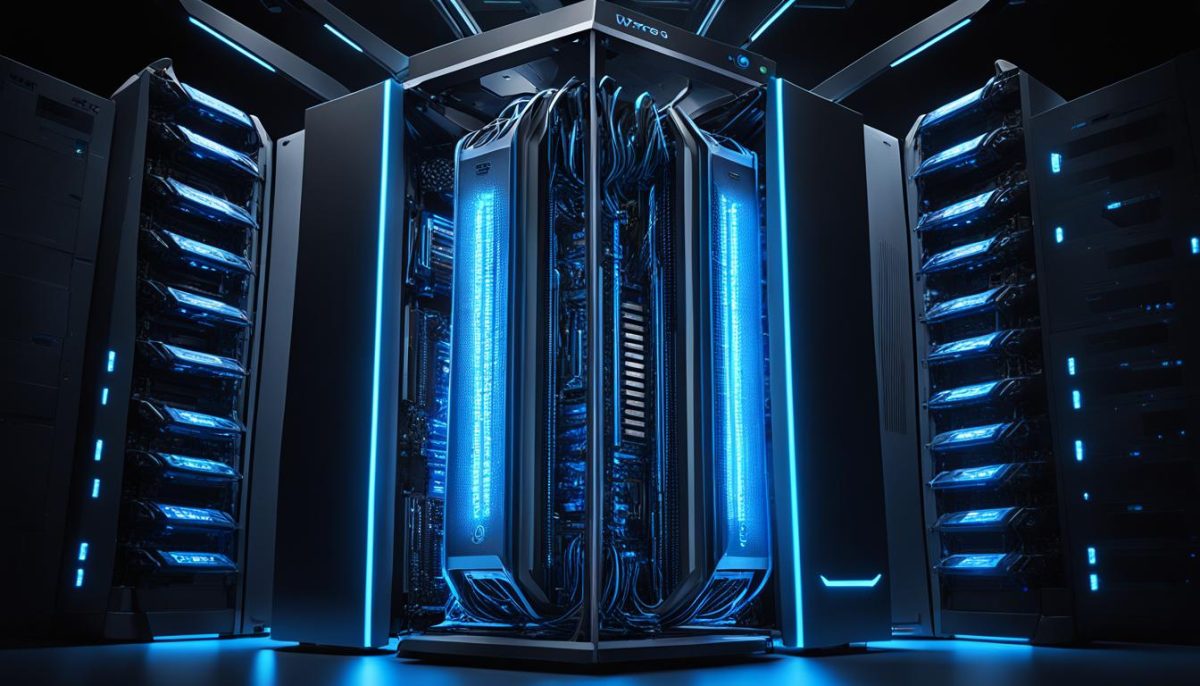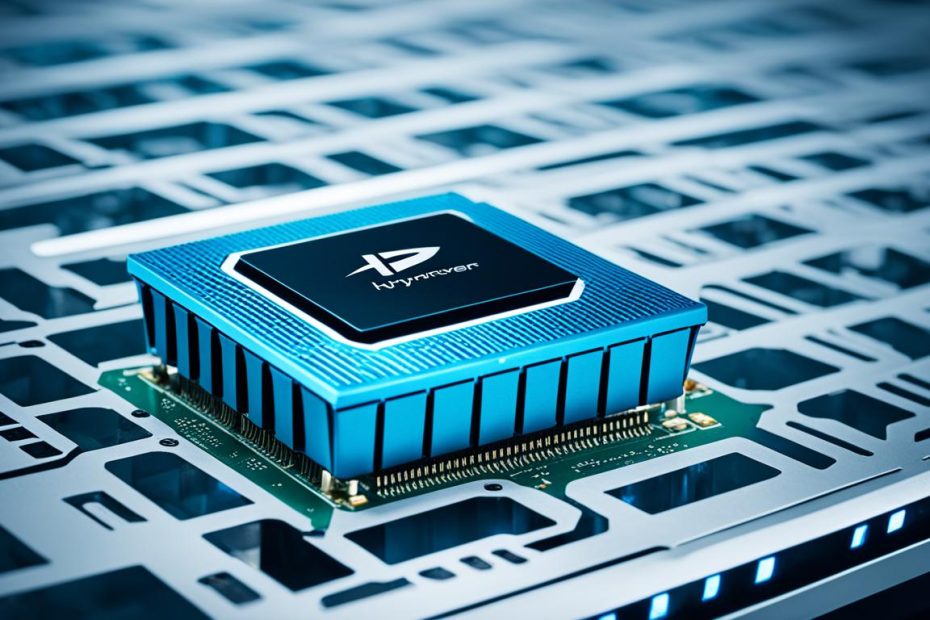Welcome to our informative article where we delve into the fascinating world of hypervisors. In this first section, we will explore the different types of hypervisors and specifically focus on the ones that run directly on the computer’s hardware.
When it comes to virtualization, running a hypervisor directly on the hardware offers numerous advantages. It allows for streamlined virtualization capabilities and optimized system performance. Through this approach, the hypervisor interacts directly with the computer’s hardware, bypassing the need for an underlying operating system.
This direct interaction enables the hypervisor to provide enhanced performance, lower latency, and efficient resource utilization for the virtual machines it oversees. This translates into faster response times, improved hardware virtualization, and effective management of key resources such as CPU, memory, storage, and networking resources.
To gain a deeper understanding of these benefits, we will compare bare-metal hypervisors to other types, such as Type 2 hypervisors or hosted hypervisors, in subsequent sections. We invite you to join us on this educational journey as we explore the power and potential of hypervisors that run directly on the computer’s hardware.
Understanding Bare-Metal Hypervisors
Bare-metal hypervisors, also known as Type 1 hypervisors, are a critical component in the world of virtualization. Unlike other hypervisors that rely on an underlying operating system, bare-metal hypervisors operate directly on the computer’s hardware, making them a powerful and efficient choice for virtualization.
One of the key advantages of bare-metal hypervisors is their ability to provide hardware abstraction. Acting as an intermediary layer between the hardware and virtual machines, they allow for optimal resource allocation and management. This means that virtual machines can directly access the underlying hardware, maximizing performance and efficiency.
With bare-metal hypervisors, virtualization takes place at a lower level, closer to the hardware, resulting in improved performance optimization. By eliminating the need for an additional operating system layer, bare-metal hypervisors minimize latency and allow for faster response times for virtual machines.
By directly interacting with the hardware, bare-metal hypervisors also enable granular control over system resources. This level of control ensures efficient allocation of CPU, memory, storage, and networking resources, leading to optimized overall system performance.
To provide a better understanding, let’s take a look at a comparison between bare-metal hypervisors and other types:
| Parameter | Bare-Metal Hypervisors | Type 2 Hypervisors |
|---|---|---|
| Hardware Abstraction | Provides direct hardware abstraction | Relies on an underlying operating system for hardware abstraction |
| Performance Optimization | Offers optimized performance due to direct access to hardware resources | Introduces performance overhead due to the underlying operating system layer |
| Resource Utilization | Enables efficient allocation and management of resources | May have limitations in resource utilization |
As seen in the table above, bare-metal hypervisors outperform Type 2 hypervisors in terms of hardware abstraction, performance optimization, and resource utilization. This makes them an ideal choice for scenarios where performance and efficiency are crucial.
Exploring Benefits of Bare-Metal Hypervisors
By running directly on the hardware, bare-metal hypervisors offer numerous benefits. First and foremost, they provide enhanced performance due to the direct access to the underlying hardware resources. This results in lower latency and faster response times for virtual machines. Additionally, bare-metal hypervisors enable better utilization of resources, allowing for efficient allocation and management of CPU, memory, storage, and networking resources.
When it comes to virtualization, performance is a key factor. Bare-metal hypervisors bypass the need for an underlying operating system, eliminating the performance overhead associated with Type 2 hypervisors. This streamlined approach translates into enhanced performance, making bare-metal hypervisors the go-to choice for applications that demand high efficiency and low latency.
Enhanced Performance
Running directly on the hardware grants bare-metal hypervisors unparalleled performance advantages. Virtual machines running on bare-metal hypervisors can harness the full power of the hardware resources, resulting in faster execution of tasks and improved response times. The absence of an underlying operating system layer decreases latency and minimizes the bottlenecks caused by resource sharing, delivering optimized performance for mission-critical applications.
Lower Latency
One of the significant benefits of bare-metal hypervisors is the reduction in latency when compared to Type 2 hypervisors. By cutting out the intermediate layer of an operating system, bare-metal hypervisors provide a direct line of communication between the virtual machines and the underlying hardware. This direct access translates into lower latency, ensuring faster data transfers and smoother interactions between virtual machines and the hardware resources.
Resource Utilization
Bare-metal hypervisors excel in resource utilization, enabling efficient allocation and management of critical resources like CPU, memory, storage, and networking. Without the overhead of an underlying operating system, the hypervisor can directly allocate resources to the virtual machines, maximizing utilization and minimizing wastage. This ensures that resources are optimally distributed, leading to improved performance and cost savings.

In summary, bare-metal hypervisors offer significant benefits, including enhanced performance, lower latency, and improved resource utilization. By leveraging the direct access to hardware resources, these hypervisors enable businesses to maximize the efficiency and responsiveness of their virtualized environments.
Comparing Bare-Metal Hypervisors to Other Types
When comparing different types of hypervisors, it’s important to understand the advantages of bare-metal hypervisors over other options like Type 2 hypervisors or hosted hypervisors. While Type 2 hypervisors rely on an underlying operating system, bare-metal hypervisors run directly on the computer’s hardware, eliminating the need for an additional layer. This direct access to hardware resources allows bare-metal hypervisors to provide improved hardware virtualization capabilities.
By eliminating the performance overhead introduced by an underlying operating system, bare-metal hypervisors offer better system performance and resource allocation. This streamlined approach enables efficient utilization of CPU, memory, storage, and networking resources, resulting in enhanced performance and lower latency for virtual machines.
In contrast, Type 2 hypervisors may experience performance limitations due to the need to interact with the underlying operating system, which can introduce additional complexity and overhead. Hosted hypervisors, on the other hand, function within a traditional operating system environment, further limiting their virtualization capabilities compared to bare-metal hypervisors.
